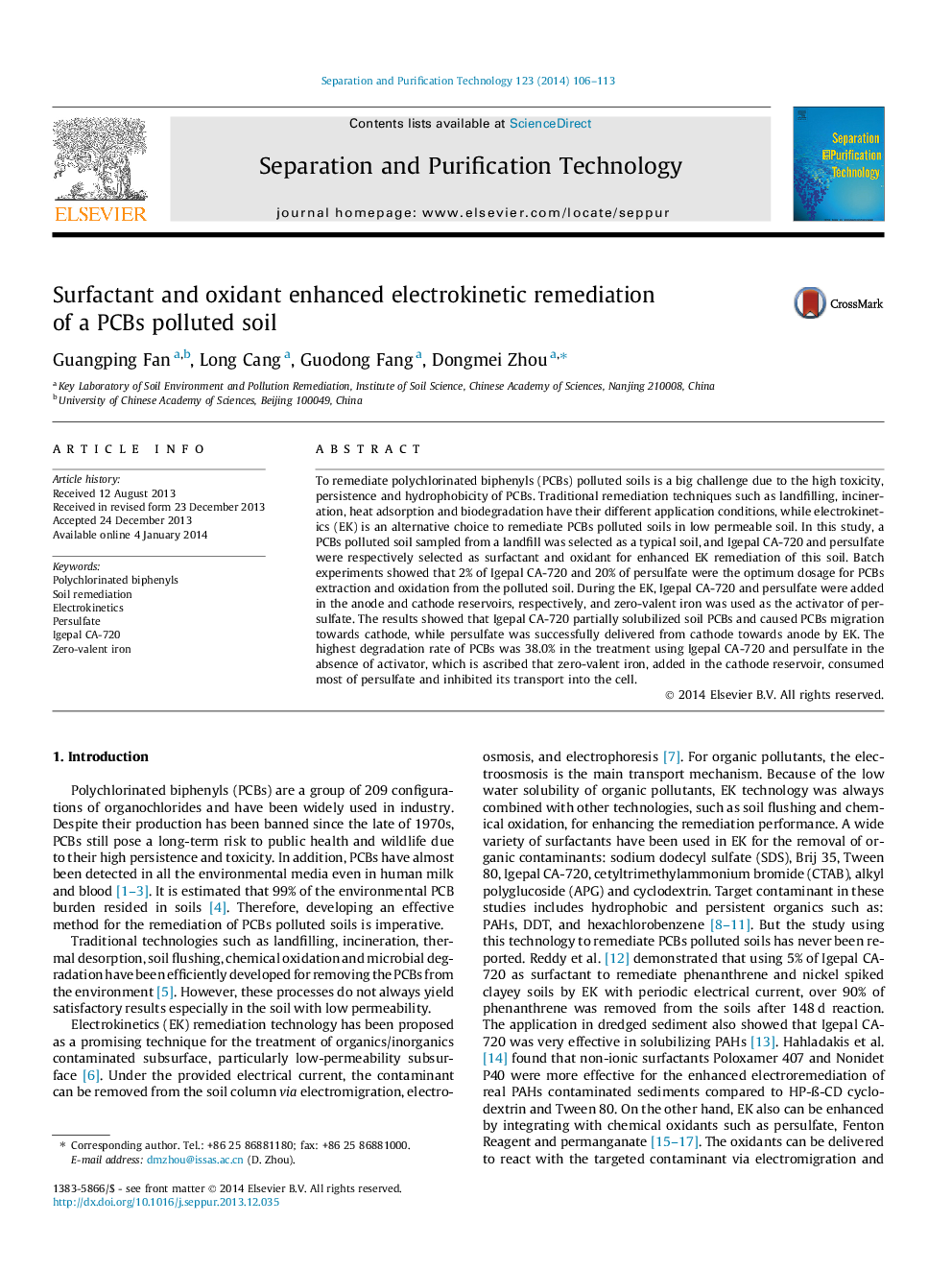| کد مقاله | کد نشریه | سال انتشار | مقاله انگلیسی | نسخه تمام متن |
|---|---|---|---|---|
| 641384 | 1456996 | 2014 | 8 صفحه PDF | دانلود رایگان |

• Surfactant and oxidant enhanced EK remediation of PCBs polluted soil was studied.
• Effect of zero-valent iron as the activator of persulfate was evaluated.
• Igepal CA-720 solubilized soil PCBs and caused PCBs migration towards cathode.
• Persulfate can be successfully delivered from cathode towards anode by EK.
To remediate polychlorinated biphenyls (PCBs) polluted soils is a big challenge due to the high toxicity, persistence and hydrophobicity of PCBs. Traditional remediation techniques such as landfilling, incineration, heat adsorption and biodegradation have their different application conditions, while electrokinetics (EK) is an alternative choice to remediate PCBs polluted soils in low permeable soil. In this study, a PCBs polluted soil sampled from a landfill was selected as a typical soil, and Igepal CA-720 and persulfate were respectively selected as surfactant and oxidant for enhanced EK remediation of this soil. Batch experiments showed that 2% of Igepal CA-720 and 20% of persulfate were the optimum dosage for PCBs extraction and oxidation from the polluted soil. During the EK, Igepal CA-720 and persulfate were added in the anode and cathode reservoirs, respectively, and zero-valent iron was used as the activator of persulfate. The results showed that Igepal CA-720 partially solubilized soil PCBs and caused PCBs migration towards cathode, while persulfate was successfully delivered from cathode towards anode by EK. The highest degradation rate of PCBs was 38.0% in the treatment using Igepal CA-720 and persulfate in the absence of activator, which is ascribed that zero-valent iron, added in the cathode reservoir, consumed most of persulfate and inhibited its transport into the cell.
Journal: Separation and Purification Technology - Volume 123, 26 February 2014, Pages 106–113